ELECTROSTATIC
PRECIPITATION
METHOD ESTABLISHED
Clifford E Carnicom
Feb 25 2001
It has been previously recommended that electrostatic precipitation be considered as an investigative tool to collect, analyze and identify the particulate matter which has been shown to exist at extraordinary levels in our atmosphere in direct association with the aerosol operations conducted without citizen informed consent. Electrostatic precipitation is a method of removing solid and liquid particles from suspension in a gas. The gas, in this case the atmosphere, is exposed to an electric field so that the particles are attracted to and deposited on a suitably placed electrode or surface. Electrostatic precipitation is widely used to remove dust and other pollutants from waste gases and from the air. [Reference Oxford Dictionary of Science, 1999]
A method to conduct electrostatic precipitation of atmospheric samples has been developed and constructed. The history of electrostatic precipitation as a filtering technique for particulate data extends back to at least 1906, with the work of Frederick Cottrell and the development of industrial electrostatic precipitators. The method developed for this current purpose consists of the following components :
1. A Van de Graaf generator, rated at 200,000 volts.
2. An electric ventilator fan
3. 3 inch duct hose with hose clamps on each end
4. A 3 inch clear plastic container with the lid and the bottom removed to allow air flow.
5. Porous filtering material covering one end of the plastic container.
6. An electrode inserted into the plastic container.
7. Glass microscope slides inserted into the container, to serve as particulate collection devices.
Analysis of the material collected is conducted via microscopy. The method developed has been tested upon smoke transferred into a container, and has proven itself to work exceptionally well. At the bottom of this page is a photograph of collection of the smoke particulate matter on a cotton swab obtained from the inside of a glass container used for that test.
The general operation of the precipitator is as follows: Air flow enters the incoming vent of the electric ventilation fan. This air is channeled approximately 3 feet linear distance through duct hose to a 3 inch diameter clear plastic container. The bottom of the container is removed for air flow purposes, and the duct hose is connected and sealed to the container via duct tape. Microscope glass slides are inserted into the container and held in place with transparent tape. The lid of this same plastic container on the opposing end (lee side) is removed, and this opening is covered with porous filter material to both restrict and permit air flow through the container. An electrode consisting of fine wire 2 to 3 inches long is then inserted through the side of the collection container, and is held in place with modeling clay. A wire to conduct the electricity runs from the top sphere of the Van de Graaf generator to the electrode inserted into the plastic container. The electric fan and the Van de Graaf generator are then started, and allowed to run for a period of time. Approximately 1 hour has been used for the initial atmospheric sampling. Particulate matter from the atmosphere will then be deposited on the microscope glass surface through the process of electrostatic precipitation, and it can be subsequently analyzed under the microscope.

Van de Graaf Generator, 200k Volts
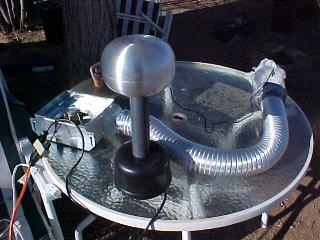
The entire assembly operational
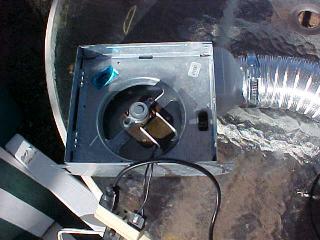
The electric ventilator fan with duct hose attached
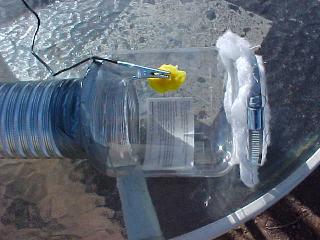
The plastic collection container with electrode
and 2 internal glass microscope slides
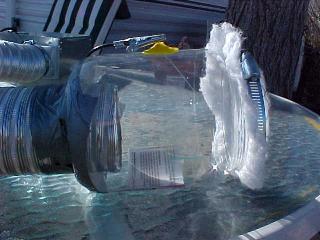
Another view of the container used, with the electrode visible.
Porous filter material attached with a hose clamp reduces the flow rate
and contains the atmospheric gas subject to the electric field.
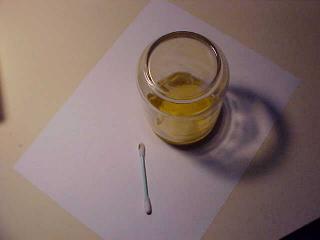
Test case of smoke particulate matter. Smoke particles precipitated on the interior glass surface within approximately 10 seconds when subjected to the electric field of approx. 200k volts. This test was repeated 3 times upon which a layer of material coating the interior of the glass surface was plainly visible.
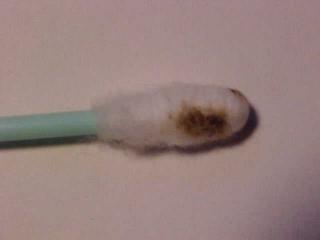
Particulate smoke material collected from the interior of the
glass surface, with the use of a cotton swab.
Clifford E Carnicom
Feb 25 2001



